CE Smith Grease Seals - 10174VB - Single Lip - Qty 2

Thank you! Your comment has been submitted successfully. You should be able to view your question/comment here within a few days.
Error submitting comment. Please try again momentarily.
- All Info
- Reviews (44)
- Q & A (0)
- Videos (2)
- Photos
CE Smith Trailer Bearings Races Seals Caps - CE16305A
- Seals
- Grease Seals - Single Lip
- 1.78 Inch O.D.
- 1.000 Inch I.D.
- CE Smith
Replacement grease seals fit a 3/4" straight spindle. Single-lip design helps keep water out and grease in.
Features:
- Replaces worn or damaged grease seals to help maintain optimal performance of bearings
- Helps keep moisture out and grease in with single-lip design
- Made in the USA
Specs:
- Inner diameter: 1.00"
- Outer diameter: 1.78"
- Application: 3/4" straight spindle
- Quantity: 2
This seal is manufactured by Transcom and is identified as 10174VB. The chart below provides a cross-reference of seals from other manufacturers.
| Seal Cross-Reference | |||
|---|---|---|---|
| Chicago Rawhide | National | NOK | Transcom |
| 10034 | 205005 | AF 7004-E | 10174VB |
16305A C. E. Smith Grease Seals - Single Lip - 3/4 Inch Spindle - Two Pack
California residents: click here
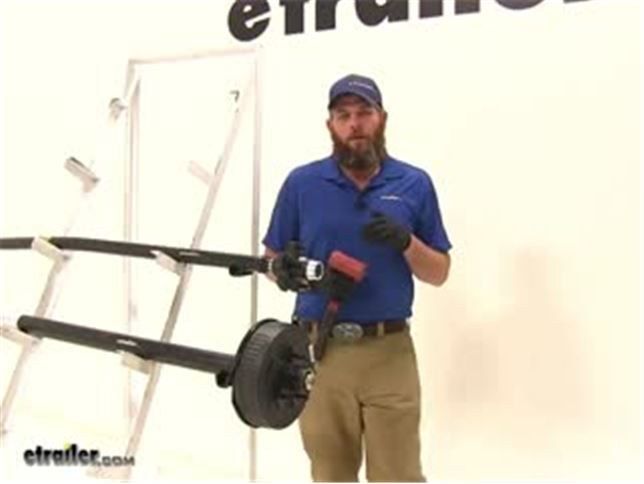

Videos are provided as a guide only. Refer to manufacturer installation instructions and specs for complete information.
Video Transcript for Trailer Bearings Races Seals and Caps Rebuild
Speaker 1: Today we're going to take you through the rebuild process on a couple of hubs. We've got an idler hub, and here we've got a hub and drum assembly. Works with electric rigs, but this can also work for just standard discs, if you've got a disc brake style setup.Basically what we're going to show you is how to get all of the bearings out. How to remove the seal. How to remove the race's if they're damaged, then get them replaced in the proper manner. We'll show you how to use an easy loop hub, which we have here.The first thing we are going to need to do is, get the grease cap off the end.
It can have either a rubber plug in it like this one does, or it can be a solid metal cap.These are pressed fit in there, basically by tapping on them on the back side. To remove them, a deadbolt hammer is typically what we're going to use. We're just going to start tapping as we go around. You'll see a little separation start right here, and slowly it'll work it's way off.Now the next step's going to vary a little bit depending on your axle setup. Do you see this is going to have a keeper that goes around the nut.
And that prevents that from being backed off, or removed. A lot of times you'll have a castle nut, which will have just little tabs that stick off, and there will be a cotter pin that passes through it. Just depending on your application, you need to get the keeper for the nut off. This style we just kind of pry out. A cotter pin you would just remove of course.Once we have that off ...
We'll start to take off the nut here, and the washer that's in behind it. Now yours should look a whole lot more dirty than this. There should be a lot of grease packed in, and through the hub, this one's brand new. We thought it'd be nice to show you the components before the grease was on .. Of our washer that comes off.And then here we're going to have our outer bearing.
Continue to pull that. We're gonig to have our inner bearing here. That sits in the backside of the hub. And we didn't put it in yet, we will show you how to put it in. But a seal would typically be covering the backside here. We'll show you how to use a seal removal tool, or another tool. To get that pried up and out. To get an access to that inner bearing.Now for a drum style like this, that process for disassembly is going to be just the same. One thing to keep in mind if you're using a disc brake setup. You'll have to remove the caliper before the disc is going to come off.Now once we have the spindle exposed, as we said this is going to be really greasy. We want to get all the grease removed, and the first thing we'll do is inspect it. We want to make sure that it looks just like what we have here. Everything's nice and smooth. We don't see any kind of discoloration, or any marring on the metal. Indicating that our bearing's got hot.If you do have any of those symptoms, at this point it's time to replace those bearings. You don't want to repack them. Get new bearings, and put in there. You might have a bearing that's come apart in here. Another surface to ensure is in good condition, is where your seal is going to go. That helps seal all the grease inside of our hub. With a damaged or broken seal, that grease is going to seep out. Either out of the hub, or in this case into our brake assembly.Now if your axle has brakes, we're also going to check the disc. Make sure it doesn't have any issues, or your hub. And this is going to be a hub and drum assembly. The brakes are going to ride on this machine surface. You're going to check that for signs of excessive heat, discoloration, or cracking. And this is our magnet surface. We'll check that surface for the same issues.Now inside the hub regardless if it's a disc brake, it's a drum brake like this. Or just a standard idler style hub. You're going to have an outer race. Would be right here, it's a small tapered piece of metal your bearing sits in, and rotates on. That's basically the outer portion of the bearing.You have the same thing here on the backside. This is called the inner race. Now if those show any signs of wear, overheating, or cracking. Those are also something we'll need to replace, which we'll show you how to do in just a minute.Now, with your brake assembly exposed, if you do have electric brakes like we have here. It's a good idea to check all the components for wear, cracking, maybe missing pieces. Check your pad thickness to make sure those are in good shape. Basically if you have a non working brake assembly and you put everything back together, you're just going to have to take it apart and do it all over again to get back to the brake assembly. This gives you a really good option to be able to change them out.And most applications are going to use a four, or maybe a five bolt flange to hold them in place. And you'll just remove the lock nuts, or sometimes you'll have a hex nut with a lock washer. You want to remove those, and then simply slide your assembly off after you cut the wiring.The friction material itself should also be checked for any kinds of cracking, or overheating. If you have any grease inside the system at all, it's likely it's gotten on those pads. It's a good idea to get those changed. Now as far as the removal of the races go, it's going to be just the same whether we're using an idler style hub like we have here. A drum brake like we have here. You can basically see where the idler is, here in the middle of the hub. It's going to go all the way around there, and we just have this extra material here to provide our braking surface.Now if you're doing a disc brake style job again, it's going to be just the same here with the races living inside of the actual hub portion. You'll just have the discs there for the brakes to make contact. We're going to use this little bit smaller one, it's a little bit easier to manage to show you how to get these out. We've talked about where the races are. The outer here, the inner being closer to the inside, but on the backside of the race there's a little lip. That lip's meant to stick out just a little bit further than the hub, and provide us an area to put our tool on, and help to drive that out.If you look all the way through there on that inner race, you'll see that little lip that sticks out just from the hub slightly, and it gives us enough area to use our tool on. Now generally to remove these you're going to use a punch, similar to this. Some guys will use a screwdriver. Or a piece of pipe. If you have a piece of pipe that's small enough to fit inside of that diameter, you can take that down through and allow it to rest on that lip.Use our punch, and then just need a hammer. And we'll start working that out. We're going to tap all the way around. Kind of equally, and evenly apply the force to get it to come on out of the bottom for us.You can see now as it starts to come out there's going to be a little gap created between the hub and the race. And we can just keep going, bringing it on out. Then you can inspect the inside of the hub surface there. Make sure no damage or anything has occurred, and repeat that same process for the outer race if you plan on removing and replacing that one.Now in the outer flat edge, you can see we're going to have our tapered edge on this side. If we roll our race over to the flat side, typically there's going to be a manufacturers part number on there. That will help you identify which race it is, that you need to go back in your system. If those are rubbed off, worn off, if you can't read them. You can measure the outside, to outside diameter of the race here. It's a good idea to use a micrometer to get it exact.Now here's your basic micrometer. And again, the outside of the race is what we're going to need to measure. You want to go . I set the thickest point there. Looks like this one's going to be about 1.98. That's going to be the measurement you'll want to supply.Now while we've got this out, let's also look at the proper way to measure our bearing. Instead of the outside for the bearing, we need to measure the inside diameter. That's going to be pretty simple. Let's pull that out, find the largest measurement we can. Which here, looks like it's going to be 1.03. With that information, we'll be able to get the correct bearing, and the correct race, so they'll fit together properly and make a full bearing kit for us.Now here's the race, we're going to show you how to get this put back in. Basically just going to press fit inside of our hubs. We need to get it down on there. Kind of like that. And you'll have a couple options. A lot of times you're going to see do it yourself or at homer, just going to use a wooden block. Just place it on there. That's going to get you started, but at that point you'll struggle in getting it to go all the way down into it's seat.Now to take care of that problem, there are several seal drivers that are available. Seal and race drivers that are available out there on the market. It's designed to fit down inside of our race, inside of our hub and get it down there where it needs to go. This is part number ptw83020, has several different sizes, even if you have multiple trailers it's going to do the job.Now the side with the angle on it, is designed to fit down inside of our race. If we use the other side, that's going to be for driving your seal into place. Just want to hold it, and take it on in with your hammer. You'll see, you just want to insure that our race is all the way up against that line on the hub where it's supposed to mate to.Now when it comes time to pack your bearings you're going to have several different ways of doing this. You can just use your hand, is the traditional method. That's going to be the method probably reserved for the very occasional trailer work kind of situation. If you do it once or twice a year, probably get away with it that way.Next you would go to a, kind of a sandwich funnel style almost. If you look inside of there, you can see the bearing. It's located between the two pieces. Just use a grease gun. Start filling that with grease, and that's going to fill our bearing for us. And the third, with this one you're just going to place your bearing down and in. It should be pretty close to center. And then we've got our cone her that's going to go down and secure that.Now I think this style, wastes a little bit more grease than what this style will. This has a dust cap. You can see, you can keep your grease in there, put your dust cap on there and save it for later use. This will be if your going to do it every couple years. And this particular style would be if you're a more regular user.Let's start by showing you how to use a bearing packer. Similar to this. Again, we've just got our grease inaudible 00:11:07 here on the top. And then just slowly start to fill it. Now I like this style quite a bit. I think even regular users might enjoy it, because you can get a really quick visual look at that bearing. You're not going to have to overdo it, or have to much grease.You can kind of see in there now, we're starting to get grease to come out of it. Couple more pumps, we'll be good. You can see we've got grease coming out all the way around. Where all of our bearings are. Got a little bit of excess there. Just take that around the outside of it. And then we should be able to lift it off. And now you can see what we we're talking about. Just a little bit of excess there, that you're just going to wind up wasting.Now we'll take our bearing, we're going to place it right down in our race. And then we'll cap off the back with our seal. Right now our seal's going to fit in just like our race did. It's going to have a little bit of a pressure fit to it. Now very often in this situation, I see people using the four by four method. Kind of here, just placing that on and tapping it. As an option though, if you do have one of these. You can see that's designed to fit right on the top of the seal. And help drive it in.The biggest thing here is, just going to be getting it driven in squarely. You can see, this side's in a little bit further than this side. I'm going to start this side first. Now since we didn't have the opportunity to show you before, we're going to take a look at pulling a seal. Now this is a seal puller, we carry this on our website part number ptw1219. This is meant to hook underneath the seal. And then you kind of pull up on it, and just like our race you'll have to work all the way around that edge. Just bringing it out a little at a time.If you don't have that available. Another option would be a screwdriver. You just kind of get that under the seal, and turn it. And see, that'll allow you to also pop that out. We've taken care of our race. Our inner bearing. Our seal. The last component, before we put our hub back in place is going to be our outer bearing. Now with this bearing, I'll show you the hand packing method.This is definitely . Slightly dirtier method than the bearing packer. When we get grease on our hand we want to look at the larger side of the bearing. This is the smaller side. We have a larger side In between the inside and outside there's a gap. We can see our rollers in there. We want to grab that, and use that gap and shove grease inside of it. Now this is going to take a little bit, you want to work in the same spot until you get the grease pushed all the way through. We can see on the top there we've got a little bit starting to come through.And once we push it in the bottom, and you see it start coming out the of the top in those little drips, it's going to indicate that, that section's fully packed. Just need to work all the way around their outside edge now and do the same thing. Alright, once that's all the way around . The bearing will be ready for use.Now one more thing I like to do. We can see our inner bearing there, and our outer bearing. Well between the two, got a pretty big gap in there. If you'll take a . Pretty good amount of grease. We're just going to go all the way around. See how we can go all the way around the inside and just line that really well. The more grease we have in here, the less chance we have of any moisture getting in there, which can cause corrosion, rust, pitting. Pretty much things we do not like when it comes to bearings, races, and hubs.Put plenty of grease in there. And then this one does have the easy lube spindle, that'll even fill it in more. Now we can get our assembly slid on. I like to keep my thumbs on that outer bearing, just to prevent it from . inaudible 00:15:28 pushed off there. Now we can put on the original hardware that we removed, in taking off our hub the first time. In our case, we had our washer and our nut.Now most commonly you'll see pliers similar to this being used. We basically want to get that tightened down. Once it's fully tightened down you'll feel some resistance in the hub. We back it off just slightly. That'll give us a little bit more freedom of motion there. Something you don't want however . Is any movement in, or out on your hub. You want to be sure that everything is compressed, and you don't have what's called end play. Which would be the play in and out.Once we've got that set, then you'll put on whatever tight keeper yours came with. Get that put back in place. Now with an easy lube style hub, you're going to place your grease gun on the end, and then you can just fill the remainder of that hub up.Now for your typical applications, you're either going to have a solid cap, or a cap that'll have a rubber plug in it. A solid cap's going to be for an axle without the grease inaudible 00:16:51 here on the end. Goes on there. Just knock it on with your rubber mallet. Same with the one with the plug. Just gives you a removable area there, be able to cap that off.We'll show you how to put that on. Now as alternatives as well, a lot of times on boat trailers and marine kind of situations. You'll see a bearing buddy. This is going to apply a little bit of pressure on the grease, you'll fill it up. This kind of comes out just a little bit. That applies constant pressure on the grease to make sure we don't have any air, or anything like that. Then there is also an oil bath hub available. Now this is going to be for use with seals that are going to be designed specifically for oil bath use. You'll have to change that seal.We're using a double lip seal. There are also single lip seals available. Of course a double lip seal is going to give you just a little additional security. Keep that in mind when you order. But let's get this knocked on there now so you can see how that works. We just want to take the cap, we're going to center it. This is going to be very similar to what we did with the seal. And then just gently start tapping it around the outside. And it'll seep down on there for you.It's really going to be the same thing that you'll do with any of the end caps. Now with this side done, it's a good idea to take care of all the other hubs. Get them all on the same maintenance schedule. And as long as you'll periodically check the grease, take your trailer out for a trip occasionally. Just to keep everything lubricated. It should extend the life of these parts, and give us years of good service.
Customer Satisfaction Score:
99% were satisfied with this product
1% of customers were not satisfied
- Wrong item was ordered
Customer Reviews
CE Smith Grease Seals - 10174VB - Single Lip - Qty 2 - CE16305A
Average Customer Rating: 4.9 out of 5 stars (44 Customer Reviews)
Replacement grease seals fit a 3/4" straight spindle. Single-lip design helps keep water out and grease in.Looks like it's going to work.
My Sears boat trailer is a 1968 model and I didn't know if parts were still available? etrailer had bearings, races and grease seals that I purchased at a reasonable price. They all fit perfectly so I guess I won't have to buy a new boat trailer.
i RECEIVED THE BEARINGS BUT NO RACES. IT SAYS IN THE DESCRIPTION "Smith trailer bearings AND races". Please send me the races as soon as possible.


Mike L.
5/18/2018
The CE16305A provides the grease seals only. If youd let us know which bearings you have, Id be happy to recommend races for you.

etrailer team did a great job helping me find the perfect fit. These fit and worked perfectly on my trailer. Id also bought the
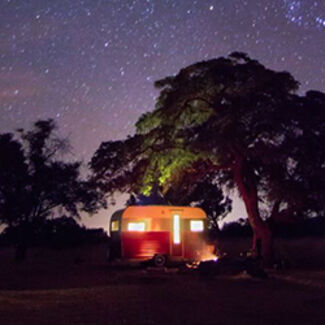
Peter

8/27/2019
After a year of use, no problem at all. Good product, good price and great customer service.
I ordered this seal to replace a set of CR10034 seals. They are an exact match and work great. But best of all, they are 1/2 the price of the CR10034 seals.
Thanks etrailer.com
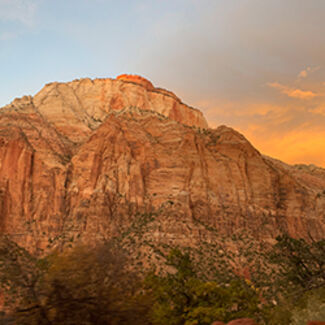
Alan

9/21/2019
The seals are still holding tight after 1 year.
Product is good. I think the packaging could be better. Unboxed bearings and races stuffed it a bow with a little crumpled up paper. Could feel them banging together just picking the package up from the mailbox.
I needed a grease seal for a vintage Snowco trailer. The original seal part # is no longer available anywhere. In your question & answer section I was able to determine that this seal would work for the bearing and hub. The seal appears to be of excellent quality and fits with the bearing and hub. The spindle has a spacer that slides into the back of the spindle and acts as a race for the flexible part of the seal to run on. The seal is slightly to small to fit over this race. I can correct this by having the race turned down to the correct dia. This turned an impossible situation into to one that I can correct with a little effort.
Extremely happy etrailer had these hard to find grease seals. Nobody carried them where I live. I was considering replacing the entire axle to more common size. Thank God for etrailer, they saved me a ton of money. Definitely will be my "go-to" place for my trailer needs.
Looked around San Diego, CA for weeks trying to find the correct seal for my 1969 boat trailer. Had been told by several people that I'd never find a seal the size needed. By luck came across etrailer on line. I knew the size I needed and found it on etrailer. Ordered it and several days later my 1969 trailer is good to go. Just ordered 4 more in case I have another problem in the next 10 years. Great online descriptions of products and not bad on delivery times.
Greetings to all! I am rebuilding my 1970 Snowco Trailer as it was part of my grandfather's estate (along with the boat)! I have had this trailer for ~15yrs and the wear and tear was starting to build. Luckily, I found eTrailer.com and was able to find the right parts the first try. I was worried about the grease seals not fitting correctly. I will say that it is "strange" to see an eTrailer.com add on the side on my news webpage that contains the tree most expensive items that I purchased! Big brother anyone!?
The CE16305A is NOT the same as the National 205005 I have. The lip location is too far inward and runs almost to the edge of the spacer in my application. The lip location of the National 205005 runs midway the 1/2" long spacer. Also, the seal does not meet the definition of "double lip" as described on this web site.
Live in a remote area. Most of our purchases are mail order. My order from etrailer came quickly and was just what I needed to rebuild wheel bearings on a boat trailer. Will be ordering from you again. Great service, easy to use site while ordering and fast delivery.
Live in a remote area. Most of our purchases are mail order. My order from etrailer came quickly and was just what I needed to rebuild wheel bearings on a boat trailer. Will be ordering from you again. Great service, easy to use site while ordering and fast delivery.
Quick and easy process. Parts arrived ahead of scheduled delivery date. The wheel seals fit perfectly. My 1972 Gravely rider is ready to roll again! I am confident the new wheel seals will keep out water and grit and save me from another failed wheel bearing.
fast ship good price.
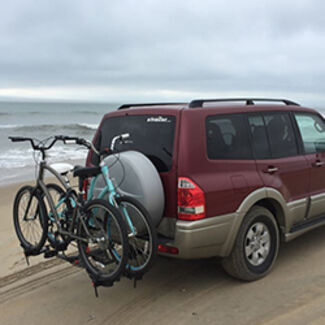
Mike L.

12/23/2022
Ive used the trailer multiple times for tousands of miles and the seals are doing their job.
These replacement grease seals are superior to the OEM leather seals that I removed. Install was easy and fit perfectly. I would highly recommend sanding down any pitted/ rusted seal surface areas first. A little grease to "wet " the seal surface goes a long way towards long seal life.

The seals were exactly as described. I have been using them for a year with no issues, a good quality product with a good price. My experience with eTrailer has been great!
etrailer had this part which I could not find locally. It was a perfect fit and sealed against the axle well.

Product was as advertised and was a perfect fit. These were use to restore my fathers fishing trailer her bought in 1955 at Sears. The trailer is up an running these days to do pleasure boating in the nearby pond. Thank you.

I put a lot of miles on my trailer and these seals are holding up great

Works good
Received exactly what I ordered. I've made several purchases from etrailer and have never had a problem. I will continue to make purchases from Etrailer.

Great company for all your trailer needs

Fit perfect

Seals fit perfect, easy to look up correct parts on your site.
See what our Experts say about this CE Smith Trailer Bearings Races Seals Caps
- Replacement Bearing For Timken 07000We do have a replacement for a Timken 07000 bearing, as it has a 1.000 inch inner diameter, so what you can use is the Replacement Trailer Hub Bearing # L44643. In regards to seal, that will depend on the diameter of your spindle where the grease seal rides, but if it is the same 1.000 inches we do have the CE Smith Grease Seals - 10174VB - Single Lip # CE16305A. Otherwise, if you let me know the number on your seal (if possible) or the diameter of your spindle (to the thousandths of...
view full answer... - Replacement Axle for Old Trailer That Uses Hub Bearing L11949Tapered roller bearing # LM11949 is typically used in agricultural hubs and mates with race # LM11910. We do offer these parts the correct grease seals # CE16305A to match your dimensions but we do not offer any hubs that use this specific bearing as both the inner and outer bearing. Your best bet is to replace the entire axle with an up-to-date kit that includes everything, such as Dexter 3500-lb axle # 35545I-EZ-89 as an example. This 89-inch axle has spring seats spaced at 74-inches...
view full answer... - Recommended Bearings Races and Seals for a 3/4 Inch SpindleWe definitely have replacements available for you. The bearing # LM11949 will have the inner diameter of 3/4" and will sit in the race # LM11910. This will have the outer diameter of 1.781", which is slightly larger than your current race, but should still fit. From there, the CE Smith Seals # CE16305A are designed for your 3/4" spindle.
view full answer... - How to Pick Out a Replacement Grease Seal for a Trailer HubFor a trailer spindle that is 1 inch in diameter where the grease seal rides the only option we have is the part # CE16305A which has an outer diameter of 1.78 inches. You will need to measure the outer diameter of the spindle on your trailer and verify it is exactly 1 inch and then measure the inner diameter of where the seal installs in the hub to determine which seal you would need. If you have different dimensions you would need to check out the link I attached to see what would be...
view full answer... - Replacement Grease Seal for CE Smith 45110 TrailerI spoke with my contact at CE Smith, who tells me that the 45110 is the part number for the trailer frame only, and wouldn't be any help in determining which axle was used on the trailer. Without knowing the axle and it's capacity, anything I'd tell you about a replacement grease seal would just be a guess. To muddy the waters further, CE Smith routinely sold those frames to many different manufacturers of smaller trailers who then finished them by adding axles, fenders, suspensions, etc....
view full answer... - Replacement Grease Seals For Coleman Colombia Pop-Up CamperThe grease seals that will work for your trailer are part # CE16305A. These seals have an inside diameter of 1-inch and an outside diameter of 1-7/8 inches and are designed to fit a 3/4-inch straight spindle. For replacement bearings I recommend part # LM11949, and the race that matches this bearing is part # LM11910.
view full answer... - How To Order CE Smith Grease Seals On WebsiteThe easiest way to order a product is to visit the product page on our website and just fill in the quantity you need and then just click on add to cart. You can then just click on calculate shipping or checkout to complete the transaction. The CE Smith Grease Seals, part # CE16305A have an inner diameter of 1 inch and outer diameter of 1.78 inches and are designed for a 3/4 inch straight spindle. These come with 2 in the package.
view full answer... - How to Identify Replacement Bearings, Races and Grease Seals for Enclosed Car Hauler TrailerYou'll want to pull one of your hubs to find the part numbers for the existing inner and outer bearings, and grease seal, to enable you to choose replacements. I have linked a photo that shows the usual placement of these part numbers. Using the existing part references is by far the easiest way to identify the correct replacement parts. If you cannot obtain parts numbers then you'll want to use a precision digital caliper (like # PTW80157) to measure the spindles at the points identified...
view full answer... - Finding Replacement Wheel Bearings for Log Splitter With a 3/4 Inch Diameter SpindleThe reason we recommend folks use a digital or dial caliper to measure the bearing ID is because it's essential that the measurement be highly accurate. Using bearings that don't fit perfectly can lead to all kinds of problems. Typically, a hub will use a different inner and outer bearing, with the inner bearing being larger. To determine which seal is used with a particular bearing, you need to know the outside diameter of the race used with that bearing. The LM11949 uses a LM11910 race...
view full answer... - How to Find Replacement Hubs for PWC TrailerSpindle measurements need to be taken to the thousandth of an inch so you would have to use dial or digital calipers to take the measurements since there are no bearing numbers on the bearings. I have included a picture that shows the measurements needed. We have one seal that has a 1 inch inner diameter, # CE16305A, but it is designed to fit a 3/4 inch spindle, not a 1 inch. Measurements are going to be key here. It is possible that we will not have hubs, bearings, and seals and if that...
view full answer...
Do you have a question about this Trailer Bearings Races Seals Cap?
Info for this part was:








At etrailer.com we provide the best information available about the products we sell. We take the quality of our information seriously so that you can get the right part the first time. Let us know if anything is missing or if you have any questions.







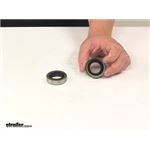






















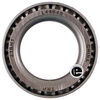






















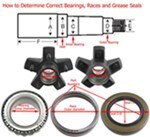
Tom Z.
7/28/2017
Great